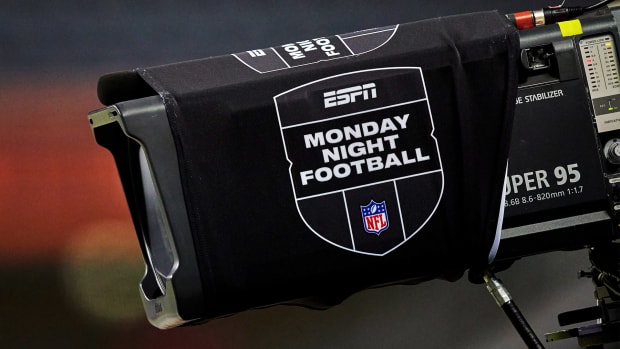The cable industry clearly has taken its time dying. Unlike the record business or print newspapers, which seemingly fell off a cliff, people have slowly abandoned their cable TV subscriptions.
Known as cord-cutting, it's a process where people drop a traditional paid television subscription for a variety of streaming services. It's a phenomenon that has been happening for years, but it's accelerating and the numbers are actually worse than they look for Comcast (CMCSA),, Charter (CHTR), AT&T (T), and the rest of the struggling industry.
It's worth noting that Comcast, Charter, and other traditional cable players have generally added as many, if not more, internet customers to make up for their cable losses. That's because while Netflix (NFLX), Walt Disney's (DIS) Disney+, and other leading streaming services can be bought by anyone anywhere while the internet still has a monopoly in significant parts of the United States.
"At least 49.7 million Americans only have access to broadband from one of the seven largest cable and telephone companies. In total, at least 83.3 million Americans can only access broadband through a single provider," according to the Institute for Local Self Reliance.
Cable Loses Even More Subscribers
On the surface, it appears that cable lost slightly fewer customers in 2021 than it did in 2020, according to data from Leichtman Research Group (LRG). The data company found that "the largest pay-TV providers in the U.S. – representing about 93% of the market -- lost about 4,690,000 net video subscribers in 2021, compared to a pro forma net loss of about 4,870,000 in 2020."
The top pay-TV companies now have 76.1 million subscribers. That's a number that's actually worse than it looks because 7.9 million of those customers subscribe to lower-cost streaming cable bundles through products like Disney's Hulu Live, Sling TV, and Fubo's (FUBO) Fubo TV.
Cable's numbers began declining in 2014 when the industry lost just over 100,000 customers. The numbers accelerated steadily climbing over 1 million in 2017, before doubling in 2018, then again in 2019, before settling in at the current rate of around 4.6 to 4.9 million subscribers per year.
On a percentage of the whole, cable losses have been growing and that seems unlikely to change anytime soon.

Robin Alam/Icon Sportswire via Getty
What Is the Impact of Cable's Cord-Cutting Disaster?
Cord-cutting does not just impact Comcast, Charter, AT&T, and other big cable companies. It also has a ripple effect across the entire cable television industry. Essentially the traditional cable bundle serves as a sort of TV socialism. You pay for the channels you watch and the ones you don't.
Content companies/channel owners get everywhere from a few cents to around $9 per subscriber for Disney's ESPN family of channels. When people cut the cord, those channel owners get less money leading to things like ESPN laying off hundreds of people, including some big-name on-air talents and channel closures like ESPN Classic and Comcast's NBC Sports Network.
As cable shrinks, niche channels become less viable. Some will support themselves via streaming services, while others will either cut their budgets or go dark altogether.
That creates a cycle where your cable subscription becomes even less valuable, leading to more people cutting the cord. It's a cable death cycle, although, like print newspapers and physical records and CDs, the total will likely not hit zero (at least for a few more years).
Comcast and Charter have generally covered their losses in cable with broadband additions. AT&T has already taken a nearly $15 million write-off charge when it spun off its DirecTV business. AT&T paid $67 billion for DirectTV (a number that includes debt) when it bought the company back in 2015.







